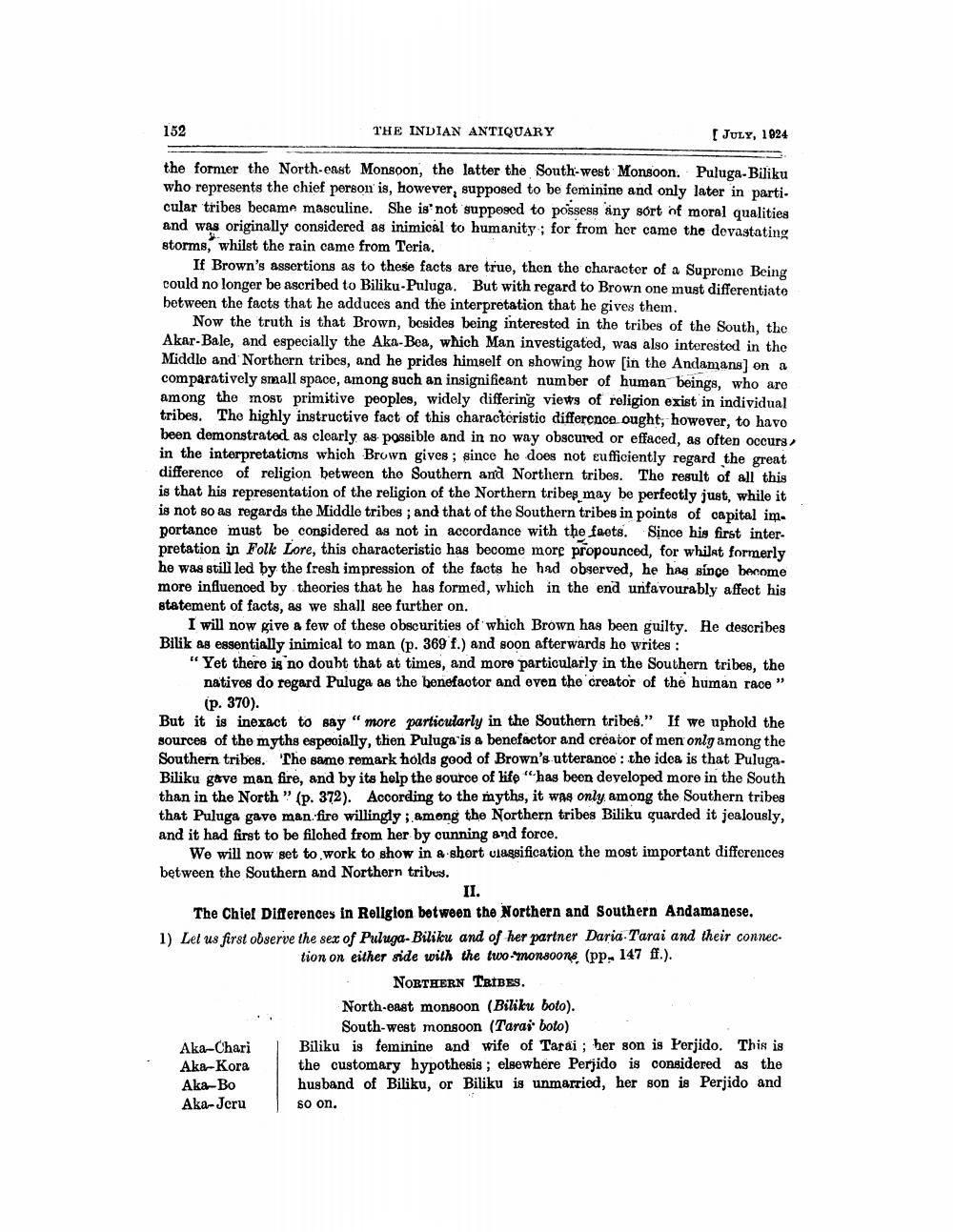________________
152
THE INDIAN ANTIQUARY
[JULY, 1024
the former the Northeast Monsoon, the latter the South-west Monsoon. Puluga-Biliku who represents the chief person is, however, supposed to be feminine and only later in parti. cular tribes became masculine. She is not supposed to possess any sort of moral qualities and was originally considered as inimical to humanity; for from her came the devastating storms, whilst the rain came from Teria.
If Brown's assertions as to these facts are true, then the character of a Suprome Being could no longer be ascribed to Biliku-Puluga. But with regard to Brown one must differentiato between the facts that he adduces and the interpretation that he gives them.
Now the truth is that Brown, besides being interested in the tribes of the South, the Akar-Bale, and especially the Aka-Bea, which Man investigated, was also interested in the Middle and Northern tribes, and he prides himself on showing how [in the Andamans) on a comparatively small space, among such an insignificant number of human beings, who are among the most primitive peoples, widely differing views of religion exist in individual tribes. The highly instructive fact of this characteristic difference ought, however, to havo been demonstrated as clearly as possible and in no way obscured or effaced, as often occurs) in the interpretations which Brown gives; since he does not sufficiently regard the great difference of religion between the Southern and Northern tribes. The result of all this is that his representation of the religion of the Northern tribes may be perfectly just, while it is not so as regards the Middle tribes; and that of the Southern tribes in points of capital im. portance must be considered as not in accordance with the faets. Since his first interpretation in Folk Lore, this characteristic has become more propounced, for whilst formerly he was still led by the fresh impression of the facts he had observed, he has since become more influenced by theories that he has formed, which in the end unfavourably affect his statement of facts, as we shall see further on.
I will now give a few of these obscurities of which Brown has been guilty. He describes Bilik as essentially inimical to man (p. 369 f.) and soon afterwards ho writes :
"Yet there is no doubt that at times, and more particularly in the Southern tribes, the
natives do regard Puluga as the benefactor and even the creator of the human race"
(p. 370). But it is inexact to say "more particularly in the Southern tribes." If we uphold the sources of the myths especially, then Puluga is a benefactor and creator of men only among the Southern tribes. The same remark holds good of Brown's utterance : the idea is that Puluga. Biliku gave man fire, and by its help the source of life" has been developed more in the South than in the North" (p. 372). According to the myths, it was only among the Southern tribes that Puluga gave man. fire willingly, among the Northern tribes Biliku guarded it jealously, and it had first to be filohed from her by cunning and force.
We will now set to work to show in a short classification the most important differences between the Southern and Northern tribus.
II. The Chief Differences in Religion between the Northern and Southern Andamanese. 1) Let us first observe the sex of Puluga-Biliku and of her partner Daria-Tarai and their connec
tion on either side with the two-monsoons (pp. 147 ff.).
NORTHERN TRIBES. North-east monsoon (Biliku bolo).
South-west monsoon (Tarai boto) Aka-Chari Biliku is feminine and wife of Tarai; her son is Perjido. This is Aka-Kora the customary hypothesis ; elsewhere Perjido is considered as the Aka-Bo husband of Biliku, or Biliku is unmarried, her son is Perjido and Aka-Jeru so on.




